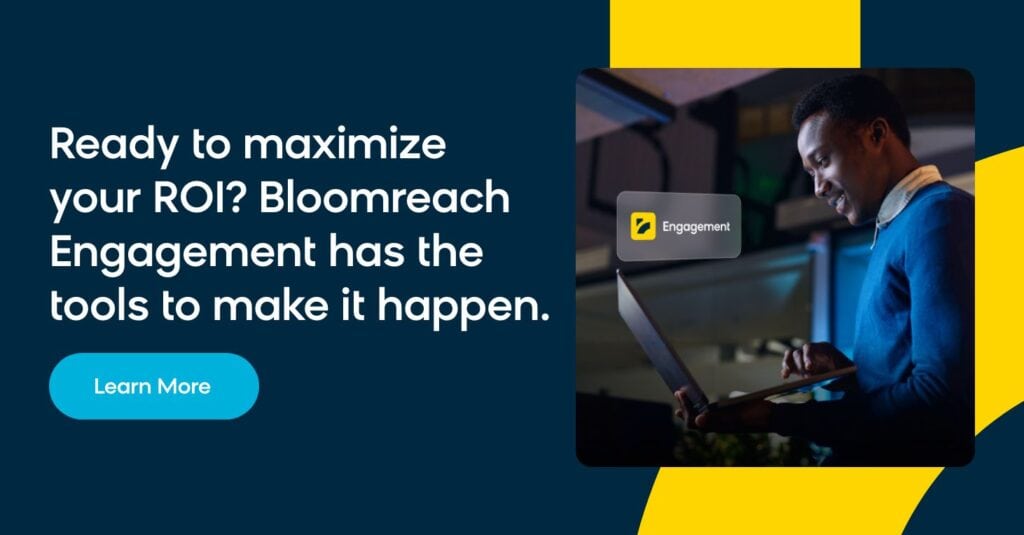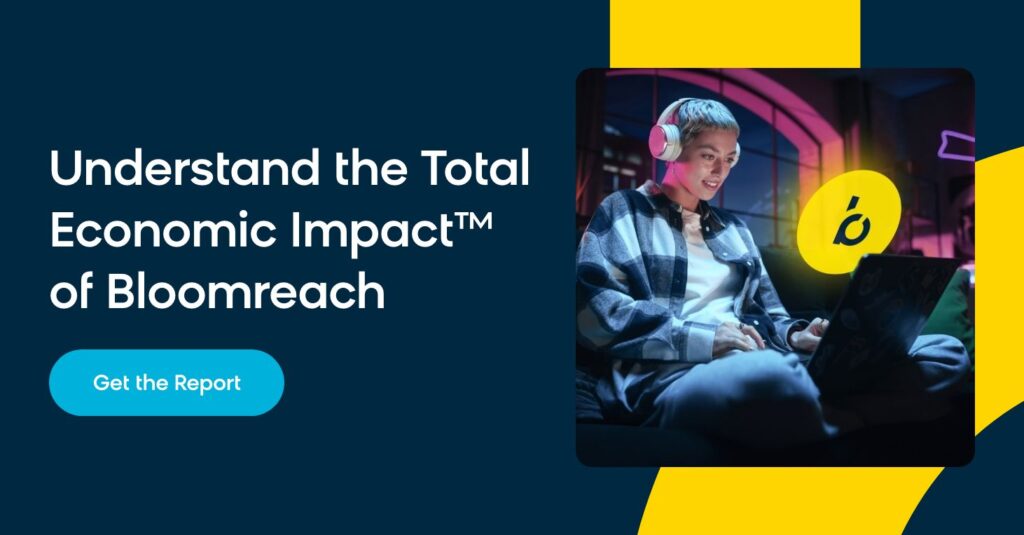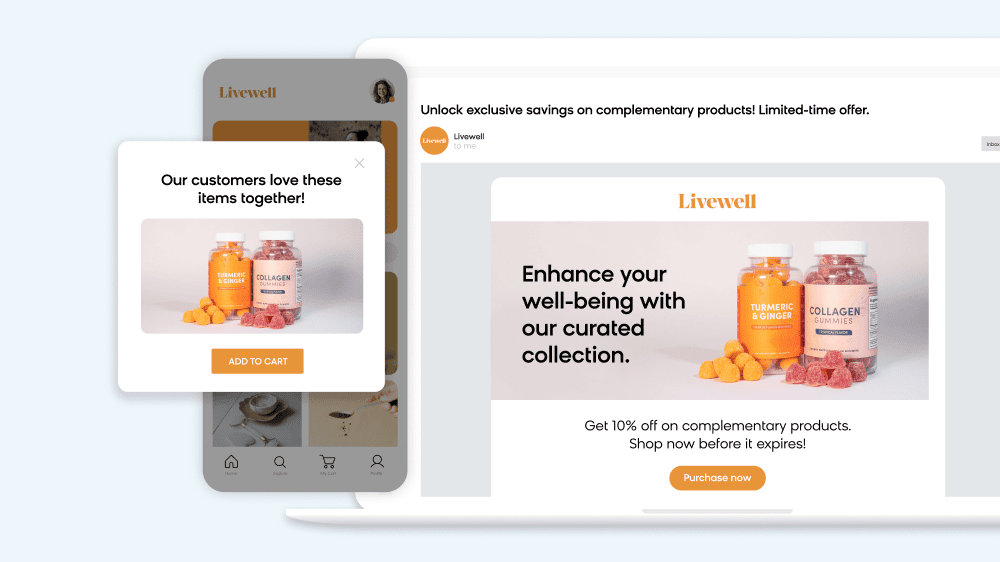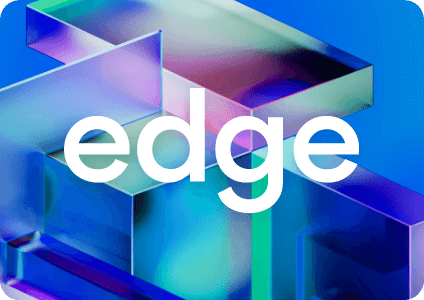Every ecommerce brand wants to save money — it’s the bedrock of profitability. But with expenses like marketing, product sourcing, and staffing piling up, finding ways to cut costs can be a challenge. So, what’s a marketer to do? Enter ecommerce cost optimization.
Ecommerce optimization focuses on streamlining operations and identifying savings opportunities without compromising quality or customer satisfaction. By leveraging data, advanced technology, and strategic insights, businesses can effectively manage costs while maintaining growth.
This guide will tell you everything you need to know about optimizing cost in ecommerce. We’ll explore the ins and outs of ecommerce optimization, including its basic definition, practical steps for implementation, and the future trends shaping this field. Let’s dive in.
What Is Ecommerce Optimization?
Ecommerce optimization involves enhancing various aspects of an online store to achieve greater profitability, from website performance and user experience to inventory management and shipping. The goal of ecommerce optimization is to streamline business processes and reduce unnecessary expenses while delivering a better customer experience. If you can achieve this, you’ll ensure that your business attracts website visitors and retains customers while operating efficiently, maximizing revenue and average order value (AOV) while keeping costs in check.
Key Areas of Focus in Ecommerce Optimization
Effective ecommerce optimization spans several critical areas, including:
- Website performance: A great ecommerce website is fast, optimized for mobile devices, and easy to navigate. A slow site speed or a complicated checkout can drive shoppers away, increasing bounce rates and reducing conversions. In fact, ecommerce sites with a one-second load time convert 2.5x more visitors than those that take 5 seconds.
- Customer acquisition: Customer acquisition can be expensive, but ecommerce optimization offers a solution. By refining your strategies, you can significantly reduce your cost per acquisition (CPA), or the amount you spend to acquire each new customer. Optimizing paid ads, SEO efforts, and email marketing are three effective ways to reach the right audience at a lower cost.
- Inventory management: Overstocking can be just as bad for business as running out of products. Ecommerce optimization can involve inventory management, which helps your brand meet product demand without tying up extra money in inventory.
- Shipping and fulfillment: Shipping costs really add up for ecommerce businesses. Clothing retailers, for example, allocate nearly 13% of revenue to shipping expenses. Optimizing your shipping methods and fulfillment processes can drastically reduce these costs and boost profitability.
- Marketing: A well-optimized marketing strategy uses data to focus on high-ROI channels and eliminate wasteful spending. By zeroing in on what works, your brand can achieve better results at a lower cost.
The Role of Cost Management in Ecommerce Success
Cost management is a cornerstone of successful ecommerce optimization. By diligently monitoring and controlling expenses, your business can boost profitability without necessarily driving more sales. Effective budgeting, detailed expense tracking, and implementing cost-saving strategies for your ecommerce store are all crucial to achieving this. For example, learning how to cut customer acquisition costs can free up resources for reinvestment in areas like customer experience, ultimately leading to long-term profitability gains.
Challenges and Considerations in Ecommerce Optimisation
Ecommerce optimization is a powerful tool for boosting profitability, but it also presents unique challenges. Let’s explore some of the most common hurdles that businesses face in this process.
Balancing Cost Reduction With Quality and Customer Experience
Reducing costs is a priority for any ecommerce business, but be wary of cost-cutting measures that compromise the quality of the products or services you provide. After all, delivering value to customers is what drives retention and loyalty, so you must be careful not to detract from this in the name of saving a few bucks.
Shipping methods are a prime example. Using a cheaper but slower shipping option may be tempting, but this can frustrate customers who are used to faster delivery. Customer service is another tricky area. Reducing customer service staff can backfire, resulting in negative reviews and increased returns.
The trick is to find areas where you can streamline operations and enhance efficiency without compromising the customer experience. Data analytics is your friend because it can pinpoint areas where cost reductions have minimal impact on quality. This helps maintain your reputation while slimming business expenses.
Navigating Regulatory and Compliance Issues
Compliance is another area fraught with challenges for ecommerce brands, especially those with a global user base. Adhering to local, national, and international regulations, like GDPR in Europe or CCPA in California, can be costly and confusing. Failing to comply with these regulations can result in expensive penalties.
That’s why it’s important for businesses to consider regulatory costs when optimizing costs in ecommerce. This may involve collaborating with legal and compliance experts to stay informed about current regulations and using technology platforms to streamline compliance management.
Maintaining Flexibility in a Changing Market Environment
Agility is quickly becoming a defining factor that separates successful and struggling ecommerce brands. It’s no secret that today’s market is constantly in a state of flux, influenced by changing customer behavior and external factors like supply chain disruptions and economic shifts. If your cost structure is too rigid, it will hinder your ability to handle unexpected changes, potentially impacting your profitability.
For instance, if your business locks itself into long-term contracts with vendors to reduce overhead costs, you may struggle to adjust if those vendors face supply chain issues or if market prices drop. Instead, aim for scalable solutions that allow your brand to pivot quickly without racking up excessive costs.
Flexibility also means being receptive to new technologies and strategies that can further enhance ecommerce website optimization efforts. Technology is constantly advancing, so be sure you’re using solutions that take advantage of the latest innovations for optimizing costs.
10 Steps To Reduce Cost in Ecommerce
Step 1: Conduct a Comprehensive Cost Analysis
Begin by assessing the main cost drivers in your ecommerce operations. Use data analytics to review expenses related to inventory, shipping, marketing, customer acquisition, and website performance. This analysis will help you identify inefficiencies and focus on areas where you can reduce spend.
Step 2: Set Clear Cost Optimization Goals
Once you’ve identified areas for cost reduction, make sure these opportunities align with your overall business goals. Clearly defined goals will guide your cost-cutting efforts and make it easier to propel long-term growth instead of just chasing quick wins.
Step 3: Prioritize Cost-Cutting Opportunities
Not all costs are created equal. Some areas of your ecommerce business offer more potential for savings than others. First, focus on the areas with the highest cost-saving potential like supply chain issues or high shipping costs. By focusing on these, you can quickly free up resources for further improvements.
Step 4: Leverage Data Analytics
Data analytics makes it easier for your team to find ways to cut costs and improve decision-making. By analyzing customer behavior, sales trends, and operational data, you can spot hidden inefficiencies and create strategies to address them. For an in-depth guide on how to use data analytics in optimization ecommerce, check out our article on data analytics in ecommerce.
Step 5: Implement Automation and Technology Solutions
Automation helps reduce repetitive tasks, cut down on errors, and boost efficiency. Using marketing automation tools like Bloomreach can optimize your email campaigns, improve customer segmentation, and deliver personalized content.
Step 6: Streamline Supply Chain and Inventory Management
Good supply chain and inventory management are essential for slashing overhead costs. Improving inventory turnover and avoiding overstocking can put money back in your pocket. Use forecasting tools to better predict demand, and consider just-in-time inventory (receiving goods only when they’re needed) to keep operations lean.
Step 7: Optimize Shipping and Fulfillment
Shipping and fulfillment can be pricey for ecommerce brands. Use fulfillment optimization tools to find the most cost-effective shipping options, negotiate better rates with carriers, and automate order routing to reduce delivery times and costs. Offering flexible shipping options, like free shipping thresholds, can reduce costs while attracting customers. Almost 80% of shoppers will actually spend more to reach the free shipping threshold, proving how lucrative this approach can be.
Step 8: Refine Marketing and Customer Acquisition Strategies
Marketing and customer acquisition can be expensive. To get the most bang for your buck, revisit these areas, focusing on strategies that deliver high conversion rates at a low cost. Identify your ideal target audience and tailor your campaigns to generate extra revenue.
Step 9: Monitor and Adjust Regularly
Cost optimization is an ongoing process. Regularly review performance metrics to find new inefficiencies and opportunities for improvement. Adjust your strategies as market conditions, customer preferences, and operational needs change.
Step 10: Foster a Cost-Conscious Culture
Cost optimization should be a company-wide mindset. Foster a cost-conscious mindset by promoting transparency about financial goals and rewarding cost-saving initiatives. When all employees understand the importance of managing costs, they’re more likely to make decisions that enhance efficiency and profitability.
Advanced Strategies for Ecommerce Cost Optimization
Running a successful ecommerce business requires more than just making sales; it’s about optimizing every aspect of your operations to reduce costs and maximize profits. These strategies can take your cost optimization efforts to the next level.
Utilizing Data Analytics for Better Decision-Making
Data analytics is key to finding hidden cost-saving opportunities. By digging into sales, operations, and customer data, you can spot inefficiencies that hurt your bottom line. For example, analyzing shipping data may lead you to better logistics partners or packaging adjustments that cut costs. Inventory analytics can help avoid overstocking and reduce warehousing fees.
Keep an eye on metrics like cost-per-acquisition, cart abandonment rates, and shipping expenses. Predictive analytics can forecast trends, ensuring you’re always ahead of potential cost drains.
Implementing AI and Machine Learning for Cost Efficiency
AI and machine learning can transform cost efficiency in ecommerce. AI tools automate repetitive tasks like customer service (via chatbots), inventory management, and personalized marketing, which in turn reduces labor costs. Machine learning uses past sales data to optimize inventory, predict demand, and automate pricing strategies.
With the right AI solutions for ecommerce, these technologies can reshape cost structures and boost efficiency.

Outsourcing and Partnerships To Minimize Overheads
Outsourcing non-core functions cuts overhead. By using external providers for things like customer support, order fulfillment, and digital marketing, you save resources and avoid the cost of maintaining in-house teams.
Outsourcing also gives you access to specialized skills without needing to train staff. Logistics companies may handle shipping more efficiently, and outsourced IT can maintain your platform for less than an in-house team. However, be mindful of balancing quality vs. costs. Don’t sacrifice the level of service you provide in the name of cost optimization, as that can hurt you in the long run.
Tools and Technologies for Ecommerce Cost Optimization
The right tech can give you a competitive edge while maintaining profitability. From AI-driven solutions to advanced analytics, these resources help businesses cut unnecessary expenses, improve efficiency, and drive sustainable growth.
Inventory Management Software
Managing your inventory efficiently is a fundamental way to optimize costs and keep things running smoothly. Stocking too much eats into profits, while too little frustrates customers. Like a cost optimization Goldilocks, finding the right balance ensures you meet demand without overextending resources.
Bloomreach’s inventory optimizer uses real-time data to analyze trends, safety stock levels, and lead times, ensuring you reorder at the right time and avoid overstocking or stockouts. Factoring in seasonality and product life cycles, we help you streamline inventory and keep operations smooth. Our price optimizer also adjusts pricing strategies based on margins, purchase data, and product views, so you’re never losing money on poorly priced items.
Shipping and Fulfillment Platforms
Shipping and fulfillment are incredibly important to customer satisfaction. A great shipping and fulfillment platform will manage the entire process of order fulfillment, from inventory management and shipping logistics to tracking and delivery, ensuring efficient and cost-effective distribution of products to customers.
Bloomreach offers tools that show real-time stock levels at local stores, supporting options like local pickup. While we don’t manage shipping directly, these features help businesses offer quicker fulfillment, reduce delivery costs, and provide a convenient alternative to home delivery. Local store pickups can also drive additional sales when customers browse in-store, improving both logistics and the shopping experience.
Ecommerce Analytics Tools
Want to know how your business is performing? Check your analytics. In 2024, it’s nearly impossible to find a thriving company that isn’t using data analytics to track growth and identify new opportunities.
Bloomreach is a pioneer in ecommerce analytics tools and helps marketers shift their perspective from channel-focused to customer-oriented. By analyzing customer behavior (past, predicted, and in-session) we help businesses increase customer lifetime value and spot churn risks. Our AI-powered Loomi Analytics solution simplifies reporting, while ready-made dashboards and third-party integrations make it easy to track important metrics and trends, so you can lower costs and improve profitability.
Pricing Optimization Software
If you’ve ever wondered whether you should be charging more or less for a product or service, pricing optimization software can clear up the confusion. Pricing optimization tools help businesses find the best price points to balance demand and profit.
Bloomreach Discovery provides real-time insights into market trends and customer behavior to make informed pricing decisions. Our AI-driven recommendations help you set optimal prices, maximize revenue, and cut costs. With our platform, you receive the insights you need to make more informed product pricing decisions, boosting competitiveness and sales while keeping your business goals in focus.
Marketing Automation Platforms
Marketing automation tools help businesses streamline marketing through automation and data-driven insights. These tools make quick work of advanced marketing personalization and help free teams from manual tasks, so they can focus on more important things like goal-setting and crafting unique campaigns.
Bloomreach Engagement is the gold standard for maximizing efficiency and cutting costs in ecommerce. From a single platform, you can run personalized campaigns across email, SMS, web, and mobile, achieving up to 251% ROI over three years. Powered by real-time data and AI, it helps lower customer acquisition costs by adapting to customer behavior. With seamless cross-channel integration, Bloomreach Engagement delivers impactful, cost-effective marketing that drives conversions and builds loyalty.

Customer Relationship Management (CRM) Systems
Customer relationship management (CRM) systems help businesses manage interactions with customers and improve sales through data. While Bloomreach isn’t a traditional CRM, we unify your customer data to support CRM systems by providing essential data for insights.
Without accurate customer data, CRMs struggle to personalize marketing or track behavior effectively. Bloomreach Engagement consolidates customer data into unified profiles. This approach makes it easier for your team to create personalized experiences and optimize costs. Additionally, our real-time data and analytics empower a list of other benefits, including more informed decision-making, fewer marketing inefficiencies, and greater customer satisfaction overall.
AI and Machine Learning Tools
AI and machine learning tools allow computers to analyze data, learn from it, and make decisions — with hardly any human input. At Bloomreach, our solutions are all powered by Loomi AI, our advanced AI designed specifically for ecommerce. Loomi AI connects all our products and helps marketers create efficient, revenue-driven campaigns.
Loomi AI offers insights into customer behavior, helping businesses predict churn, optimize send times, and generate personalized product recommendations. This level of personalization improves customer experiences and lowers marketing costs by ensuring campaigns reach the right audience at the right time. With Bloomreach Engagement, you can use real-time data and machine learning to streamline marketing efforts and maximize ROI, making our platform a key asset for cost optimization in ecommerce.
Supply Chain Management Software
Customers prefer to shop for products that are readily available and can be delivered quickly. When items are out of stock, 60% of U.S. shoppers change their shopping behavior, often leaving your site to find alternatives. That’s why supply chain management software is a must-have for any business. It helps track and optimize the flow of goods, information, and finances from supplier to customer, so you’ll always exceed customer expectations.
Bloomreach eases your supply chain woes by providing insights to help you manage your ecommerce logistics effectively. With Bloomreach, you can analyze inventory levels, supplier performance, and demand forecasts in real time, helping you streamline operations and cut costs. Our advanced analytics and AI recommendations spot inefficiencies and make informed decisions to strengthen your supply chain strategy. This reduces operational costs and elevates customer satisfaction: a win-win for any ecommerce brand.
Warehouse Management Systems (WMS)
Warehouse management systems (WMS) help businesses manage and control warehouse operations, keeping track of inventory, streamlining tasks, and improving order fulfillment. Needless to say, a good WMS is the backbone of a profitable ecommerce brand.
While Bloomreach isn’t a dedicated WMS, we provide insights to help ecommerce businesses manage their supply chains more effectively. We track relevant data to determine optimal reorder points and inventory levels, reducing the risk of overstocking or understocking. Our tools also help you anticipate demand trends, ensuring you have the right products on hand when needed. With Bloomreach’s support, warehouse management becomes more efficient and profitable, allowing you to focus on delivering exceptional customer experiences.
Chatbots and Customer Service Automation
Even in a digital shopping environment, customers still seek personalized assistance with their purchases and returns. Instead of relying on 24/7 human agents, businesses are turning to AI-powered chatbots and customer service automation to deliver instant, tailored support, which enhances the shopping experience while reducing operational costs.
Bloomreach Clarity, our conversational AI, makes online shopping more engaging and efficient. Clarity provides personalized product recommendations and expert shopping advice, boosting satisfaction and driving conversions. Plus, our AI assistant operates 24/7, handling customer inquiries efficiently and reducing the need for large customer service teams. Clarity is your go-to platform if you want to build meaningful customer connections, unlock new revenue channels, and provide a customer experience that online shoppers return to again and again.
Future Trends in Ecommerce Cost Optimization
AI has proven to be a powerful cost-saving tool, and its significance in ecommerce will only grow. As AI and machine learning continue to advance and consumers become more accustomed to AI-powered interactions, these technologies will have an even bigger role in reducing business costs.
Sustainability-focused strategies will gain traction as consumers demand greener practices. Implementing strategies like energy-efficient warehousing, reducing packaging waste, and using green logistics can lower long-term operational costs while appealing to eco-minded shoppers. Nearly 80% of US shoppers polled in 2024 say that sustainability concerns are at least somewhat important to them when they shop.
Additionally, analytics will keep evolving, becoming smarter and more efficient. Advanced natural language processing (NLP) will help companies better understand customer preferences, empowering ecommerce brands to forecast inventory needs and marketing spend more accurately. Brands will also better prioritize data privacy. Handling customer information responsibly will become table stakes and brands who do it well will quickly build trust with their audience.
Slash Operational Costs With Bloomreach
Cutting costs can be easier said than done for ecommerce brands. With so much to manage — shipping, logistics, marketing, and customer service, to name a few — finding the right areas to reduce expenses without sacrificing the customer experience is a challenge.
The solution is ecommerce cost optimization. By streamlining operations, leveraging data, and using advanced technology, you can reduce unnecessary expenses while still fueling growth. This means analyzing your supply chain, refining marketing spend, and adopting AI-powered tools to improve efficiency.
Ready to take your cost optimization to the next level? Explore how Bloomreach’s suite of tools can help you reduce overhead, improve customer experiences, and drive long-term success. Optimize smarter and grow faster with Bloomreach.













